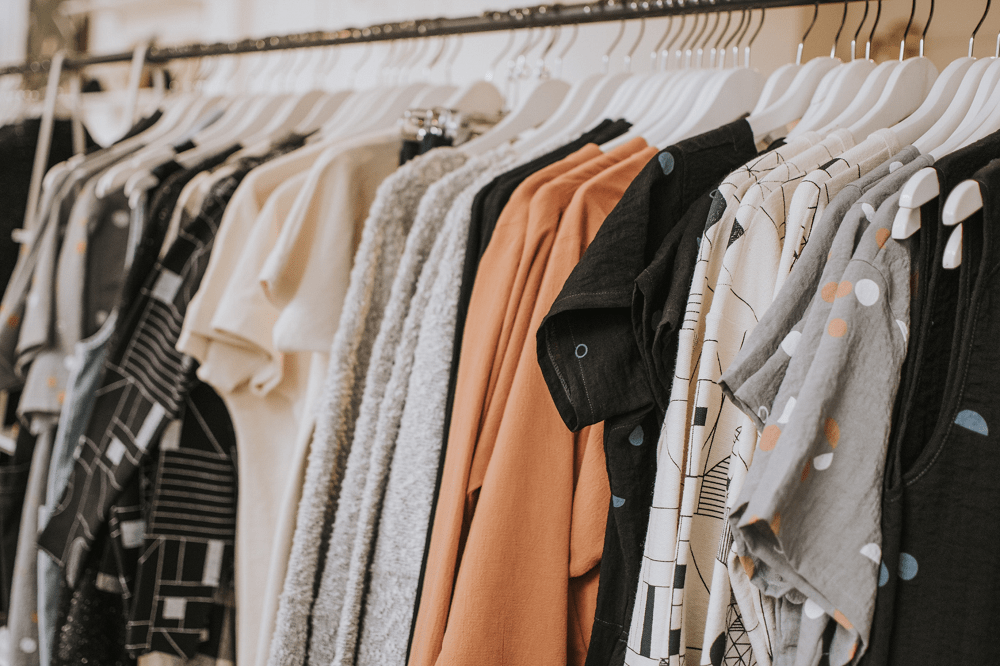8 Tips for a Zero Waste Wardrobe
My wardrobe wasn’t the first place I thought of when I went plastic-free and zero waste. No, the first place was the kitchen, and the second place was the bathroom. After all, these are the places where we generate a lot of packaging, because many of the things we buy are consumables (meaning, we use them up and they need replacing).
But once I’d been on the zero waste journey for a while I started to think about clothing. I’m the kind of person who wears things well past their life expiration date – things will have holes and be almost threadbare before I’m ready to part with them.
At this point, clearly they aren’t fit for the charity shop.
It was then that I realised that many of these fibres in my wardrobe were synthetic, not compostable and not really recyclable.
- Textile recycling is limited in availability (meaning recovery rates are low – in the USA recovery rates are estimated to be 15%);
- Textile recycling is also limited in effectiveness and is generally not closed-loop: many textiles are recycled “thermally” (meaning incinerated for energy) or using chemicals;
- Let’s not forget the sheer volume of textile waste created every day. (It’s estimated that Australians discard 6,000kg of fashion and textile waste every 10 minutes. That’s just the waste in one country…)
Figures like this can be a little depressing, and I don’t like to focus on the problems. I much prefer solutions! Over the years I’ve been working on making my wardrobe as zero waste as possible, and I want to share what I’ve learned.
There’s a lot to say. I’m going to start with what choices I make when I let things into my home to ensure they get the best use and last well, and how I plan for zero waste with the purchases I make.
Next week I’ll share how I let go of things I no longer need, or things that have life expired, without chucking them in the bin.
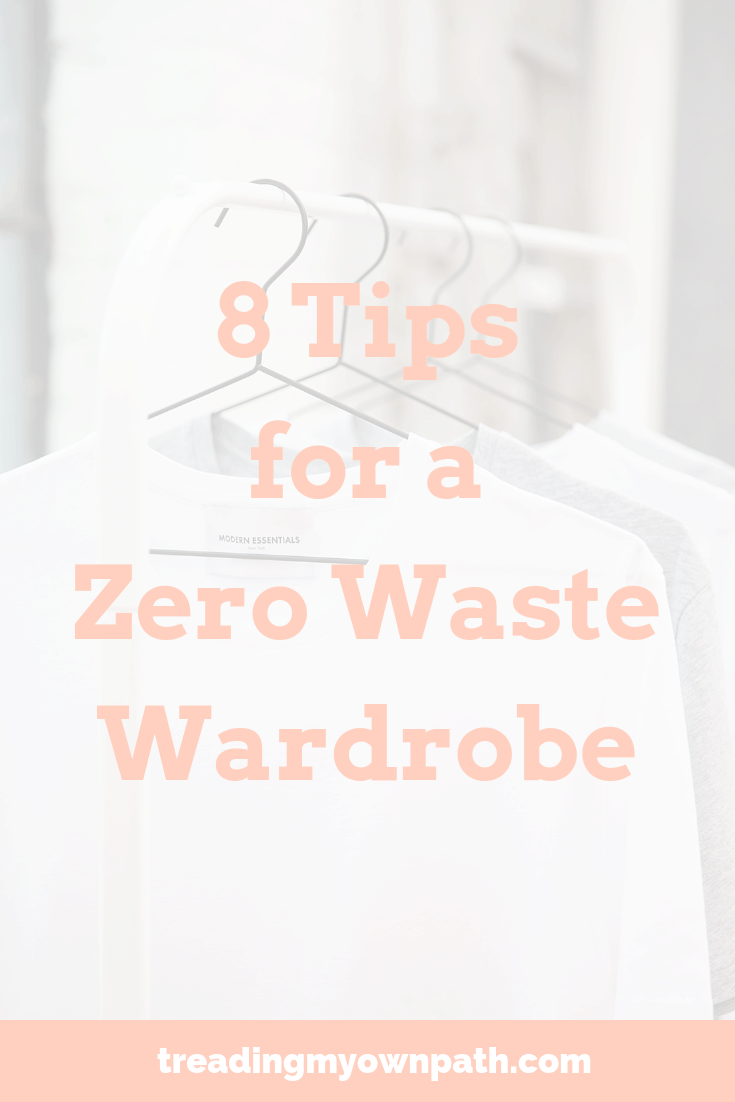
1. Buy Stuff You Will Actually Wear
This sounds so obvious, but I have definitely been guilty in the past of buying clothes that then just sat in the wardrobe, tags still attached, unworn.
There were a few reasons for this:
- Choosing items that were a little too tight, or that looked good but weren’t actually comfortable;
- Choosing an item that I loved the look of in the shop (or on the model) but that didn’t actually suit me;
- Choosing something that wasn’t the kind of thing I actually had an occasion to wear (I might love the idea of dresses in reality, I love to wear jeans more than anything else);
- Not being practical about whether the item I bought matched the things I already owned.
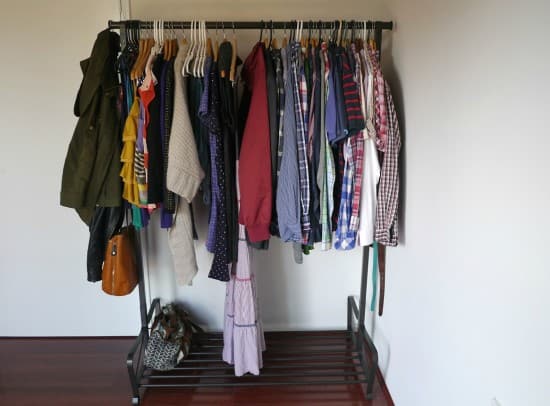
It was only after I decluttered my wardrobe down to my essentials that I really began to understand exactly what I wore – the colours, the styles and the materials. Now I’m much more strict when I chose things.
If it’s not a definite yes then it is a no. There’s no room in my wardrobe for maybe.
2. Don’t Be Tempted by “Bargains”
I’ve purchased many “bargains” in my time that have sat in my wardrobe, unworn (usually for the reasons mentioned above). I used to have a real weakness for labels telling me the item was 70% off.
However, I can get an even greater bargain, and save 100% of my money, by not buying things that I then never wear.
When I first started shopping for clothing second-hand, the same thing happened. There were so many great items that were so cheap! Rather than thinking – Do I need it? Will I wear it? Is it worth it? – I’d think, wow, what a bargain!
Cue more things I didn’t wear.
A bargain is only a bargain if it is something that we will wear, and often. Now I ask myself, would I buy this if it was full price? Meaning, do I love it that much? I need to love the item more than the price tag for it to be worth bringing it home.
3. Choose Clothing You Can Wear 30 Times
Yes, it is better to only buy clothing that we love, that fits, that suits us and is practical for our lifestyle. If we want a zero waste wardrobe, we also need to think about how well made things are.
Buying something we love only to find that after 3 washes, it is bobbled and misshapen to the point of being unwearable is disappointing, frustrating, and a waste of resources (the materials it is made from, the effort that someone put into making it, and the work we’ve done to to pay for the item and bring it home).
Whenever I’m thinking about whether to buy an item, I ask myself two questions:
- Will I wear it 30 times?
- Can I wear it 30 times? (Will it last?)
If I can’t honestly answer yes to both of these questions, then I don’t make the purchase.
(Of course, things don’t always go the way we intend. We can mean to wear an item, and then change our minds later. But the more honest we are with ourselves the less likely we are to buy things we think we like, but don’t. If an item disintegrates after 5 washes, we can learn from this and be more mindful about choosing that material or brand next time.)
4. Avoid Excessive Embellishments
Beads, sequins and tassles might look fantastic on a brand new item, but they make an item much more difficult to wash (often meaning handwash or dry clean only) and they tend to fall off quickly.
If we’re not inclined to sew things back on, this can mean a premature end for our clothing. However, most beads, sequins and embellishments come off and are lost (meaning we can’t sew them back on, even if we are inclined to do so). Plus many are plastic, meaning plastic pollution.
I’ve made purchases like this in the past. I had a dress covered entirely in sequins, and whilst I loved that dress, it didn’t make it to 30 wears.
I still have a jumper sewn with tiny black beads that I’ve owned since 2011, that has lasted more than 30 wears. I’ll snip all the beads off before I compost the jumper, but it’s not something I’d purchase again.
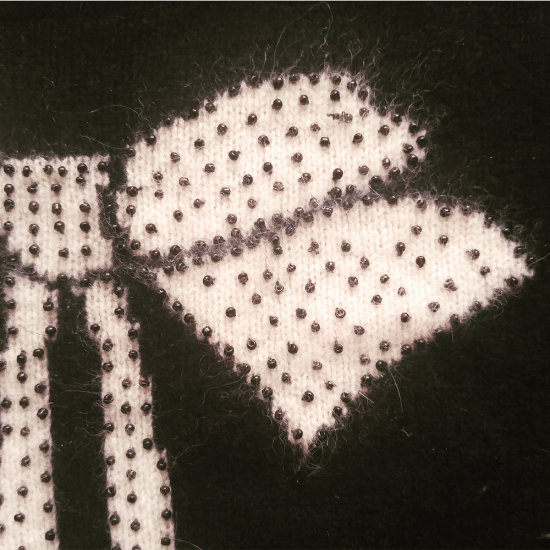
However pretty sequins or beads are, now I choose not to buy these things. That way I don’t have to worry about where they will end up. I want clothing that will last, and I don’t want my clothing contributing to plastic pollution.
5. Shop Second Hand
I’m often torn between wanting to shop second-hand and wanting to support ethical, Fair Trade clothing companies by purchasing their (new) products.
With only 15% of all clothing donated to charity shops actually re-sold (the rest is dumped overseas, processed into rags or landfilled), I tend to lean more towards the second-hand option.
Buying second-hand means less new resources used, and less items heading for landfill. I shop at a couple of charity shops that I know sell good quality items and don’t have an overwhelming amount of choice. If I’m looking for something specific I use eBay.
6. Choose Natural Fibres (Where Possible)
I would love my wardrobe to be entirely natural materials, but let’s just say that is a work in progress. I’m very conscious of the materials I buy, and I always check the label before making a purchase.
It can be hard to find natural fibres in charity shops or second-hand.

I’ve had some great successes, for example this skirt (cotton and elastane, percentages unknown), denim shirt (97.8% cotton) and silk top (100% silk) were all second-hand from the charity shop.
Recently I needed some shirts for my talks/workshops, and I had to settle for two polyester numbers. I can tell the difference when I wear them immediately (I feel like I’m wearing a plastic bag), and I’m planning to re-donate them to the charity shop once I can find a natural fibre replacement.
7. Choose Recycled Synthetics (If Natural Fibres Aren’t An Option)
Whilst I try to limit my use of synthetic fibres as much as I can, sometimes it is unavoidable. When I headed off on my camino adventure, I purchased a rain jacket. I’ve really needed one for years, but the trip pushed me over the line.
The raincoat I purchased was made by Patagonia, who are well known for and committed to pursuing sustainable practices. The outer is made from 100% recycled nylon.
8. Shop Ethical
When I need to make a new purchase, I try to support ethical, sustainable brands. I don’t buy many clothes brand new, but it does happen.
One thing I always buy new is underwear. There are two brands I buy, Etiko and Mighty Good Undie: both are Fair Trade and use organic cotton. I don’t have a preference, but usually one brand is out of stock when I go to order so I go with whichever has my size.
Etiko is slightly cheaper but also slightly lesser quality, and the sizes also come up slightly bigger than Mighty Good.
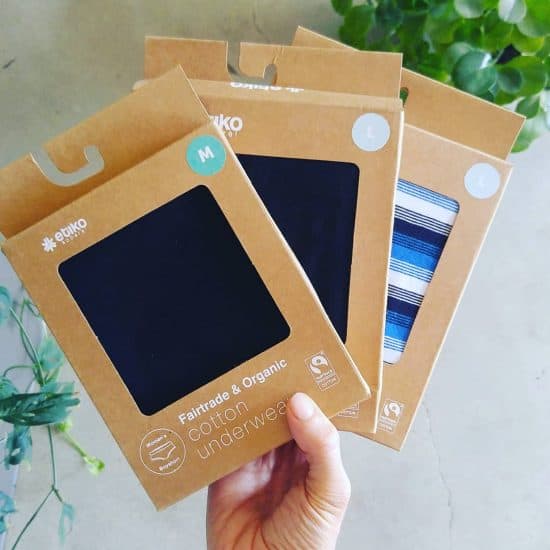
Yes, both brands are more expensive than regular non-organic big box store brands. After I have a minor heart murmur over the price, I remember that I don’t buy new underwear often (maybe once a year) and I don’t buy new things often, and when I do make purchases, I want to act in line with my values.
That means supporting small business, supporting organic farming, and supporting Fair Trade practices.
To me, that’s worth the extra few dollars. In reality the difference is less than the price of a glass of wine or smashed avo on toast, and supporting a better world is worth prioritizing.
…
I don’t purchase everything second-hand, nor do I purchase 100% organic, Fair Trade and natural fibres. My ideal would to be able to find everything that fitted all of these criteria (except perhaps for second-hand underwear!) but the reality is, there’s often compromise.
My goal is to do the best I can with the options available to me and the resources I have; to learn as I go, and strive to do that little bit better next time around.
Now I’d love to hear from you! How do you reduce your eco footprint when it comes to your wardrobe? Do you love second hand stores, or do you prefer new ethical fashion? Is there anything you particularly struggle with? Any tips to add? Please share your thoughts in the comments below!
[leadpages_leadbox leadbox_id=1429a0746639c5] [/leadpages_leadbox]

